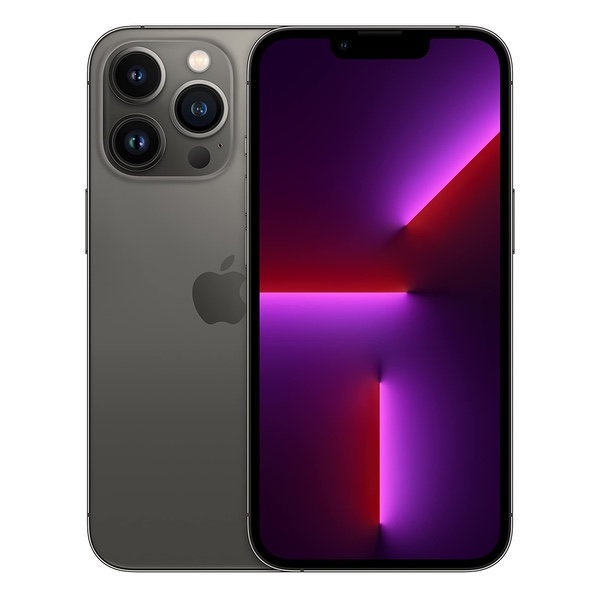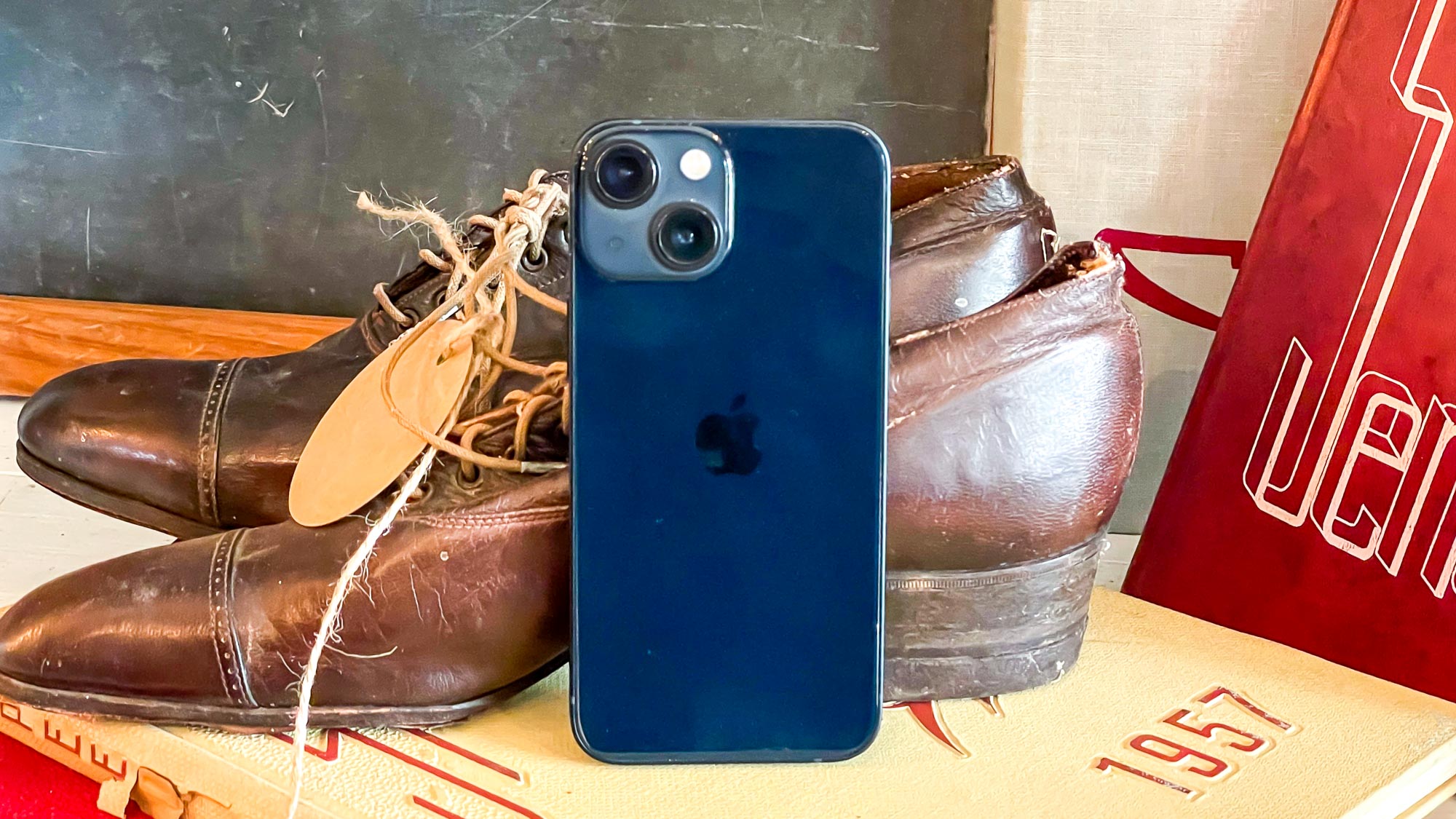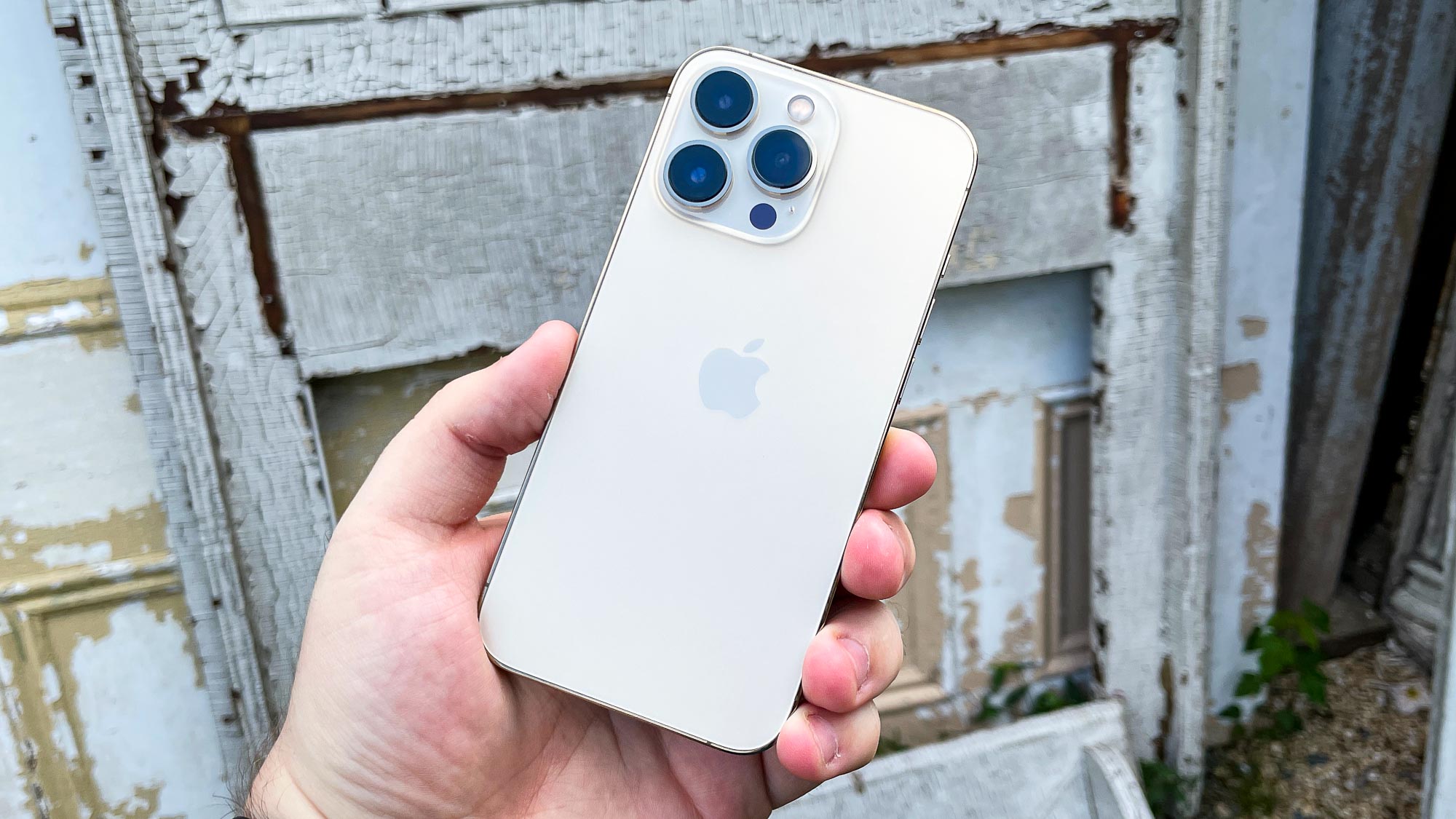iPhone 13 vs. iPhone 13 Pro: Which phone is best?
Here's how the iPhone 13 vs. iPhone 13 Pro differences stack up

With a better display and longer battery life than its predecessor, as well as a pair of impressive rear cameras, the iPhone 13 is a relatively affordable way to get an excellent Apple phone.
For
- Brighter display
- Great cameras
- Compelling Cinematic video mode
- Class-leading performance
- Very good battery life
Against
- Lacks 120Hz display
- Slower charging than rivals
- Cinematic mode capped at 1080p

Despite being fully replaced by the iPhone 14 Pro, the iPhone 13 Pro is still a brilliant phone. It sports an impressive trio of rear cameras, a 120Hz display and masses of performance. You may struggle to buy a brand-new one these days, but it's a notable upgrade over the standard iPhone 13.
For
- Gorgeous and bright 120Hz display
- Incredible performance
- Spectacular cameras
- Vastly improved battery life
Against
- Fast charging limited to 20W
- 4K ProRes video limited to 256GB and above
Chewing over the iPhone 13 vs. iPhone 13 Pro is arguably a little moot now, as the latter is no longer available having been replaced by the iPhone 14 Pro, though the iPhone 13 is still on sale from Apple. But regardless, you may just simply be curious as to how the standard phone measures up against its Pro sibling.
If you want the latest Apple phone showdown, then check out our iPhone 14 vs. iPhone 14 Pro, iPhone 14 vs. iPhone 13 and iPhone 14 Pro vs. iPhone 13 Pro head-to-head as that'll give you an idea of whether the newer phones are worth considering.
However, brushing that aside, read on to see which phone is best for you in the iPhone 13 vs. iPhone 13 Pro showdown.
iPhone 13 vs. iPhone 13 Pro: Specs
| Header Cell - Column 0 | iPhone 13 mini | iPhone 13 | iPhone 13 Pro | iPhone 13 Pro Max |
|---|---|---|---|---|
| Starting price | $699 | $799 | $999 | $1,099 |
| Storage | 128, 256, 512GB | 128, 256, 512 GB | 128, 256, 512, 1TB | 128, 256, 512, 1TB |
| Screen size | 5.4 inches | 6.1 inches | 6.1 inches | 6.7 inches |
| Resolution/ppi | 2340 x 1080/476 | 2532 x 1170/460 | 2532 x 1170/460 | 2778 x 1284/458 |
| Adaptive refresh | No | No | Up to 120Hz | Up to 120Hz |
| Chip | A15 Bionic | A15 Bionic | A15 Bionic | A15 Bionic |
| Rear cameras | Dual 12MP (Wide, ultrawide) | Dual 12MP (Wide, ultrawide) | Pro 12MP (Telephoto, Wide, Ultra Wide) | Pro 12MP (Telephoto, Wide, Ultra Wide) |
| Zoom | None / 5x digital | None / 5x digital | 3x optical / 15x digital | 3x optical / 15x digital |
| Front camera | 12MP TrueDepth | 12MP TrueDepth | 12MP TrueDepth | 12MP TrueDepth |
| Colors | Red, Starlight, Midnight, Blue, Pink | Red, Starlight, Midnight, Blue, Pink | Graphite, Gold, Silver, Sierra Blue | Graphite, Gold, Silver, Sierra Blue |
| Size | 5.2 x 2.5 x 0.3 inches | 5.8 x 2.8 x 0.3 inches | 5.8 x 2.8 x 0.3 inches | 6.3 x 3.1 x 0.3 inches |
| Weight | 4.97 ounces | 6.14 ounces | 7.2 ounces | 8.5 ounces |
| Water resistance | IP68 | IP68 | IP68 | IP68 |
| Battery life | 8:41 | 10:33 | 11:42 | 12:16 |
iPhone 13 vs. iPhone 13 Pro: Prices and storage
Available to buy right now, the iPhone 13 mini starts at $699, the iPhone 13 at $799, the iPhone 13 Pro at $999 and the iPhone 13 Pro Max at $1,099. In the U.K. those prices are £679, £779, £949 and £1,049 respectively.
Storage-wise, the 64GB option has been dropped, with all four phones starting at 128GB and then having 256GB and 512GB versions. But the iPhone 13 Pro and iPhone 13 Pro Max get one advantage here, in the form of a massive 1TB model.
As always, the iPhone 13 mini and iPhone 13 have a big price advantage, but if lots of storage is important to you, you'll want to look at the Pro models. But they are far from cheap, so we suggest you look at our dedicated iPhone 13 deals page for the very latest sales.
iPhone 13 vs. iPhone 13 Pro: Design and colors

The good news here is that all four new iPhone 13 models get smaller notches. In fact, they've been reduced by 20% — which means you’ll get a little more screen real estate whichever one you're using.
Sign up to get the BEST of Tom's Guide direct to your inbox.
Get instant access to breaking news, the hottest reviews, great deals and helpful tips.
That aside, the design of the iPhone 13 range isn't massively different from that of the iPhone 12 models. Size-wise, they're all near-identical to last year's models, other than being a tiny bit thicker (0.30 inches rather than 0.29).
That means the iPhone mini 13 measures in at 2.53 x 5.18 x 0.3 inches, the iPhone 13 at 2.82 x 5.78 x 0.3 inches, and the iPhone 13 Pro at exactly the same as the iPhone 13. The iPhone 13 Max, meanwhile, is a whopping 3.07 x 6.33 x 0.3 inches.
Both also have a new camera array on the rear — more on that below — and it's here that the design differences can clearly be seen. The iPhone 13 mini and iPhone 13 have two main lenses arranged diagonally whereas the iPhone 13 Pro and Pro Max have three lenses arranged over a larger camera module.


The color options for the two phones are also wildly different. The iPhone 13 mini and iPhone 13 get five hues: Starlight, Midnight, Blue, Pink and (PRODUCT)RED. The iPhone 13 Pro and Pro Max, meanwhile, only get four choices, but to our eyes at least they're more subtle and attractive. Here, you can pick from Graphite, Gold, Silver and Sierra Blue.
Finally, the iPhone 13 Pro and iPhone 13 Pro Max have a textured matte glass rear, whereas the iPhone 13 and 13 mini have a standard glass finish.
Ultimately, there's not much in it when it comes to design, and it's unlikely that it'll sway your decision as to which model to buy.
iPhone 13 vs. iPhone 13 Pro: Displays

All four iPhone 13 models keep the same screen sizes as they did previously, with the iPhone 13 mini sporting a 5.4-inch display and the standard iPhone 13 and iPhone 13 Pro both having a 6.1-inch screen. The iPhone 13 Pro Max is the biggest of course, and has a 6.7-inch display.
All four models make use of Apple's new Super Retina XDR OLED displays. On the iPhone 13, the display has a typical outdoor brightness of 800 nits and a peak level of 1200 in HDR mode, making for a hike of 28% in brightness. Comparatively, the displays on the iPhone 13 Pro Max models are 1000 nits in typical outdoor use and can also hit a peak of 1200.
But the biggest difference between the iPhone 13 and iPhone 13 Pro handsets is that the latter models have a ProMotion display that sports an adaptive refresh rate, allowing the display to go from a speedy 120Hz to 10Hz in order to conserve battery life.
It’s disappointing that Apple didn't give all four iPhone 13 handsets a 120Hz display, as we see such high-refresh rates in plenty of affordable Android phones. But it’s certainly a feature that helps the Pro models stand out from the standard iPhone 13.
iPhone 13 vs. iPhone 13 Pro: Cameras

All four iPhone 13 models deliver impressive phone photography, and the iPhone 13, 13 Pro, and 13 Pro Max have all earned a place on our best camera phones list; they have now been superseded by the iPhone 14 range.
But there are notable differences between the pair of rear cameras on the iPhone 13 and the trio of snappers on the iPhone 13 Pro models.
The iPhone 13 has a new sensor in its 12MP main camera, which lets in 47% more light for improved night-time photography, while the 12MP ultra-wide camera gets a faster sensor. Both of these cameras are configured in a diagonal line rather than a vertical one as seen on the iPhone 12. And they deliver impressive results, with bright and colorful shots and improved night time photography on the ultra-wide camera, as well as four times more scene capture.
Sensor-shift optimization has now been included in the iPhone 13 models, where previously it was an iPhone 12 Pro Max feature; this allows the lens to move and thus better cope with uneven changes of movement.

The iPhone 13 Pro models get similar upgrades, but on paper at least they're more impressive, with wider apertures on the main and ultra-wide cameras and a LiDAR scanner to tap into for night-mode portrait shots.
The ultra-wide camera now offers what Apple claims is a 92% improvement in low-light photography, and it also has support for a macro mode, allowing users to get close ups of very small objects. It's with the macro mode where the iPhone 13 Pro phones beat their standard siblings, offering better extreme close ups.
Meanwhile, the telephoto camera on the iPhone 13 Pro and 13 Pro Max, something the iPhone 13 lacks, has received a solid upgrade. The new 77mm telephoto lens now has a 6x optical zoom range, with a digital zoom of up to 15x. This new telephoto camera not only beats the iPhone 13 by its mere inclusion, but also offers more zooming capabilities than the iPhone 12 Pro, and with a wider f/1.5 aperture, it lets in more light too.
iPhone 13 vs. iPhone 13 Pro: Video

All four iPhone 13 handsets can capture video at up to 4K and 60 frames per second. And all phones put in solid point-and-shoot video performance, as has bene the case with the past few generations of iPhone.
There's also a new “Cinematic” mode for capturing videos with smart near-instant autofocus between differnet subjects, as well as more dramatic depth-of-field effects; think portrait mode video but more powerful. But do note that this mode only works on 1080p videos. And in our real-world tests, we found the Cinematic mode isn't perfect with it taking a little longer than expected to recognize faster moving subjects.
Aside from the extra telephoto camera, the iPhone 13 Pro has the advantage in video by being able to capture using ProRez, Apple's new high-quality, lossy video compression format aimed at people who want more control over editing their videos yet don't want to swamp phone storage with uncompressed videos. However, if you only have the 128GB iPhone 13 Pro, then ProRez is limited to shooting 1080p videos at 30 fps, rather than 4K at the same frame rate.
iPhone 13 vs. iPhone 13 Pro: Performance

All iPhone 13 models come with the new Apple A15 Bionic chip. Built on a 5-nanometer process, the chip comes with six processor cores: two for demanding tasks and four for more less rigorous workloads to increase efficiency. Overall, Apple claims the A15 Bionic offers 50% faster performance than the leading competition; here's looking at you Qualcomm.
But it's on the graphics side that we see some disparity between the iPhone 13 and iPhone 13 Pro. The former has four GPU cores, while the latter has five. Apple claims the iPhone 13 offers 30% better graphics performance than leading Android phones, but noted that the extra core in the A15 Bionic for the iPhone 13 Pro handset will offer 50% more graphics performance than rival chips.
In our testing, the iPhone 13 scored 4,129 on the Geekbench 5 multi-core test and 1,684 in the single-core test. The iPhone 13 Pro outperformed it but only just scoring 4,718 and 1,733 respectively. That's not really a big enough difference to notice any real performance disparity in everyday use.
In graphics testing, iPhone 13 hit 55.9 fps in the 3DMark Wild Life benchmark, while the iPhone 13 Pro managed a very impressive 70 fps. Clearly, that extra GPU core is working hard. So if you want the best gaming performance, then you'll want to go for the iPhone 13 Pro, not that the standard phone will let you down either.
iPhone 13 vs. iPhone 13 Pro: Battery

All four iPhone 13 handsets have been given a battery boost, though Apple never reveals the actual capacity of its phones’ battery packs.
And in our testing, which involves continuous web surfing over 5G with the display set at 150 nits of screen brightness, that has borne fruit. The iPhone 13 mini lasted 8 hours and 41 minutes, the iPhone 13 managed 10 hours and 33 minutes, the iPhone 13 Pro reached 11 hours and 42 minutes, and the iPhone 13 Pro Max topped the charts with a battery life of 12 hours and 16 minutes.
So if you want the best battery life, then the iPhone 13 Pro models are the phones to go for. But the iPhone 13 still beats the iPhone 12 for electrical endurance.
iPhone 13 vs. iPhone 13 Pro: Verdict

All models in the iPhone 13 range were pretty impressive at launch, though the smaller size of the iPhone 13 mini didn't win much attention. While all four models have been eclipsed by the iPhone 14, at the time of launch the iPhone 13 Pro offered the most significant upgrade for the iPhone. And thus it would be the winner here, were it not discontinued.
As such, if you want the best iPhone you can buy today, then go for the iPhone 14 Pro or iPhone 14 Pro Max. With a new 48MP camera and the Dynamic Island, these phones offer a notable step change from their predecessors.
But if you want to save some money and need a new iPhone, then the iPhone 13 is still an excellent choice. Not much has changed to warrant getting the iPhone 14, other than a few small tweaks. So if you find the iPhone 13 at a good price, then it's well worth your consideration.
Roland Moore-Colyer a Managing Editor at Tom’s Guide with a focus on news, features and opinion articles. He often writes about gaming, phones, laptops and other bits of hardware; he’s also got an interest in cars. When not at his desk Roland can be found wandering around London, often with a look of curiosity on his face.
-
eNeLGe Just to get this straight, "While all four models have been eclipsed by the iPhone 14", "Not much has changed to warrant getting the iPhone 14, other than a few small tweaks."Reply

